How this S’porean grew Cat & the Fiddle from an online cheesecake biz to 7 outlets islandwide
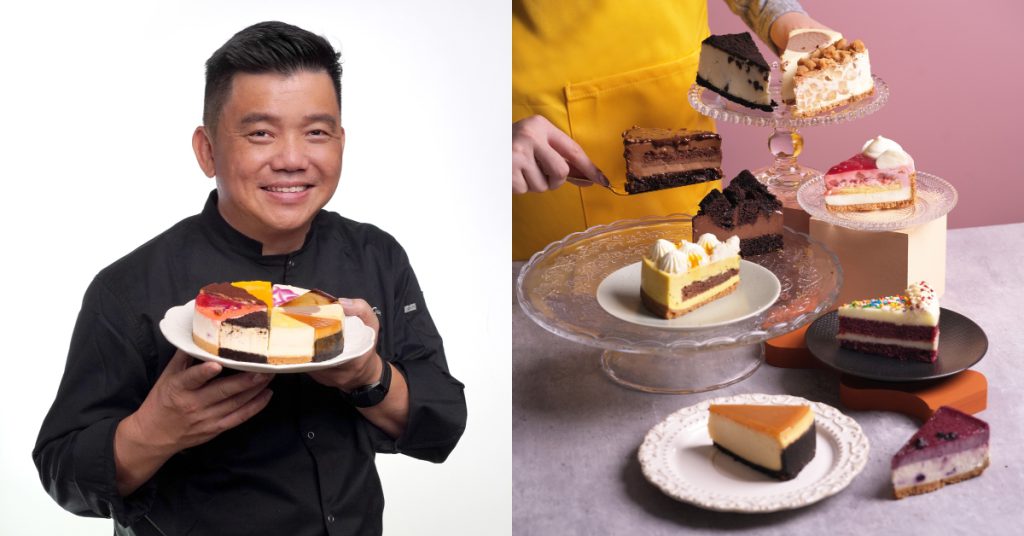
Daniel Tay is more than just a foodie—he is an industry veteran who has created well-known F&B brands in Singapore, such as the now-defunct Bakerzin and Old Seng Choong.
He is also the founder of Cat & The Fiddle, which started as an ecommerce platform in 2014 and has since grown to open its brick-and-mortar stores in the city-state and beyond.
It has been a decade since the brand launched, and it got us wondering—what does it take for an F&B business to stay relevant amid the industry’s ever-changing nature? Here’s what Daniel has to say.
Building a solid base for his cheesecake biz
In his previous interview with Vulcan Post, Daniel shared that launching Cat & The Fiddle as an online F&B brand was an opportunity for him and his team to explore a business that ran solely online.
“Many people are armchair shoppers, so it made sense for us to go online and so far, the results are very good.” He added that being an online retailer also provided the flexibility to choose the most convenient method to receive their orders.
For Cat & The Fiddle, the first step was to have a “fantastic” cheesecake recipe, which Daniel and his team have perfected along with their cryogenic freezing technology.
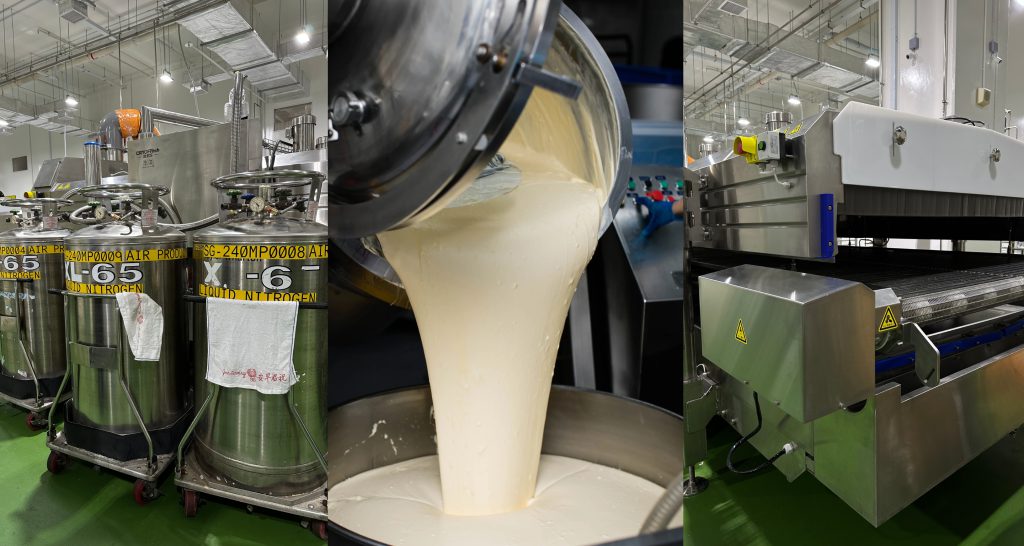
This method uses liquid nitrogen to rapidly freeze the cheesecakes, retaining their moisture and freshness and preventing bacterial growth and wastage. This allows them to have a longer shelf life, even with fluctuations in temperature that inevitably occur during deliveries.
The brand’s second step is to create “clever cheesecake flavours”, including Asian and localised flavours like Mao Shan Wang durian and Milo Dinosaur.
Cat & the Fiddle currently sells 19 cheesecake flavours in total, as well as two combinations from its Fickle Feline range—10 distinct cheesecake flavours presented as one.
When asked about the number of cakes the company produces every day, Daniel did not disclose a specific figure. However, he shared that various factors such as seasonality, retail promotions, and special occasions affect the brand’s demand for cheesecakes.
Expanding into brick-and-mortar
Nevertheless, Cat & the Fiddle became a recognisable brand in the Singapore F&B landscape, opening its first physical outlet at Clarke Quay Central in 2018. (Note to reader: this outlet has since closed.)
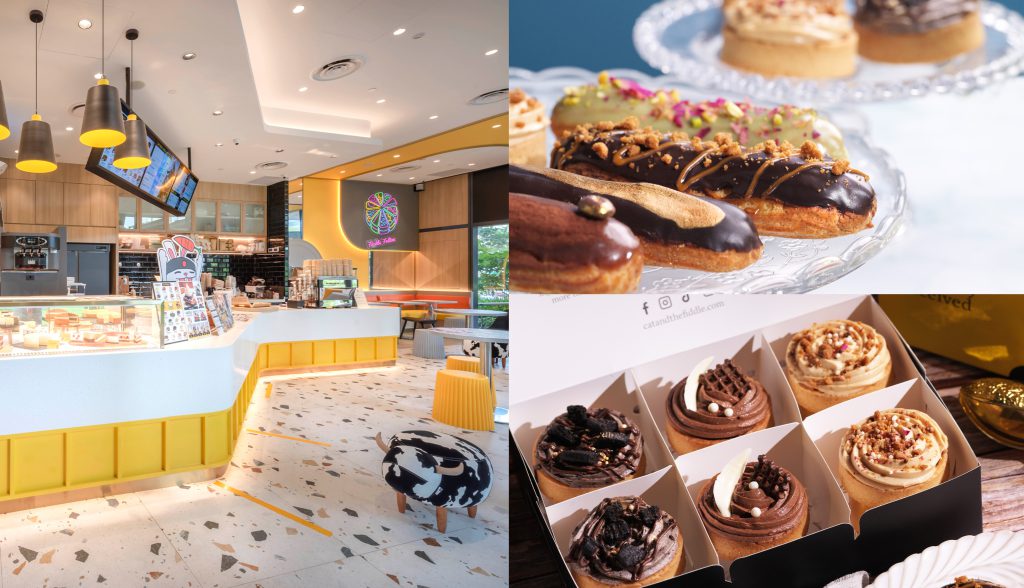
Currently, the company has seven outlets, including its dine-in cafe at Woods Square, where it sells desserts such as eclairs, tarts, and macarons in addition to cheesecakes.
Many come to the store to buy their cheesecake fix and pick up a selection of our tempting eclairs, tarts and macarons for their family members and friends who are partial to these. After all, variety does enhance any celebration, ensuring that there’s something for everyone to enjoy. This variety allows guests to choose treats that suit their tastes and the occasion perfectly.
Daniel Tay, founder and group chairman of Cat & The Fiddle, Old Seng Choong, and Foodgnostic
Daniel shared that despite having to contend with the cost of operations, rental, and manpower challenges, he was confident that the company would continue to have “the cutting edge” and remain competitive in retail with its loyal customer base and new product offerings.
Cat & the Fiddle has adopted an omnichannel approach, with online orders contributing about 55% of the business’s total revenue. Sales from its retail outlets account for approximately 30%, and the remaining comes from other channels.
“While online sales drive the bulk of our business, the physical outlets and other channels play a crucial role in expanding our reach and building brand presence across different customer segments,” added Daniel.
He shared that their physical outlets attract customers who prefer to see the cheesecakes in person and provide another collection point for customers to pick up their orders.
Growing its presence beyond Singapore
It’s been 10 years since Cat & the Fiddle first started. To date, the company said it has sold over 1.5 million cheesecakes in Singapore and has over 139,000 followers who engage with the brand.

The company has also expanded its presence to Malaysia, Indonesia, and Vietnam, and is planning to enter the United Arab Emirates (UAE). It’s worth noting that its Malaysian outlets have temporarily ceased despite the encouraging response they received upon opening.
Daniel explained that it was a “wise decision” for the brand to “step back and evaluate” what is needed to continue growing. “We are currently assessing the market and refining our strategies, with the aim to resume operations soon,” he added.
He’s aware that entrepreneurs need to do their homework and research their potential markets when expanding internationally. For Cat & the Fiddle, its halal-certified cheesecakes gave it access to enter Indonesia and the UAE, where halal certifications are vital.
However, the company needed to find the sweet point to maintain the quality of the cheesecakes as they were transported to their respective countries, which required careful planning from the team.
Daniel also emphasised the importance of having a flexible pricing strategy that allows the company to stay competitive and profitable amid fluctuations in exchange rates, which affect the retail prices of his cheesecakes.
To commemorate its 10th anniversary, Cat & the Fiddle has introduced its lifetime membership programme, a loyalty rewards programme that provides members with exclusive benefits and birthday perks.
“This is a tribute to fans of Cat & the Fiddle and to continue giving them the best deals and, of course, the best cheesecakes,” added Daniel.
The company is also working on launching a “Gen 2” cafe concept in Singapore, which will offer hot food alongside their cheesecakes for a complete dining experience, and it will be shared “in due time.”
Also Read: After a failed expansion, this S’porean revived his dad’s old bakery that now serves tourists
Featured Image Credit: Cat & The Fiddle
These self-taught bakers opened Fluffed 9 yrs ago, now they have 2 cafes & a new bingsu brand
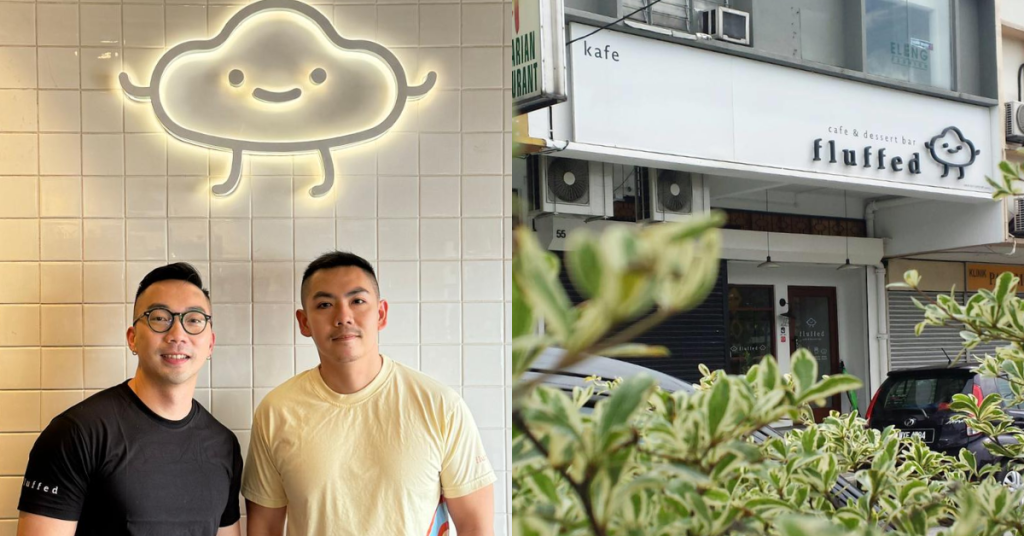
There’s a famed waffle spot that I keep hearing about called Fluffed Cafe.
With their first outlet located in Taman Paramount, Fluffed is a dessert cafe that’s well known for its waffles and ice cream, alongside various other offerings.
Most recently, they’ve also gone viral for their new bingsu brand, Flurrē.
To some, it might seem like Fluffed has been able to achieve success easily. However, speaking to the founders, Charles and Joe, I quickly learnt that Fluffed’s journey has not been as rosy as it seems.

Taking the leap of faith
The story starts about a decade ago, if not more.
Prior to Fluffed, both Joe and Charles were full-time home bakers. Joe, who has a background in interior design, was doing quite well selling customised cakes for events like weddings and birthdays.
Meanwhile, Charles had wanted to do a baking course after his SPM, but to appease his parents, he ended up pursuing food science and nutrition. After graduating, he worked as a nutritionist—a stint that would last three months.
“Something dramatic happened to me,” Charles shared about his pivot. “My boss sent me to work in a pharmacy in Johor on my birthday. It was supposed to be my off day.”
The nightmare doesn’t end there. During the three-hour drive down to Johor, it had been raining heavily, and unfortunately, Charles got into a car accident.
“I crashed into the divider, and my car was like a total loss. But miraculously, I was totally fine,” he recalled.
This near-death experience showed him that he needed to pursue what he truly loved in life. After his trip, he handed in his resignation letter and bought an oven.
Unlike Joe, Charles had a hard time selling his cakes. Focusing on selling to cafes, he primarily created cakes with fruit fillings, which wasn’t as popular at the time.
Thus, he decided, why not start his own cafe where he could sell his own cakes?
At some point along the journey, Joe and Charles met, and their mutual interest got them to work together. Joe was looking to scale up, something he realised would be tricky to do alone. With that, in 2015, the two opened up Fluffed together.
Growing with and for the team
To offer more options at Fluffed, Charles took on barista courses and learnt how to make his own ice cream. And if he knows how to make ice cream, why not waffles too?
“Surprisingly, people prefer our waffles,” he mused. “It became our famous thing.”
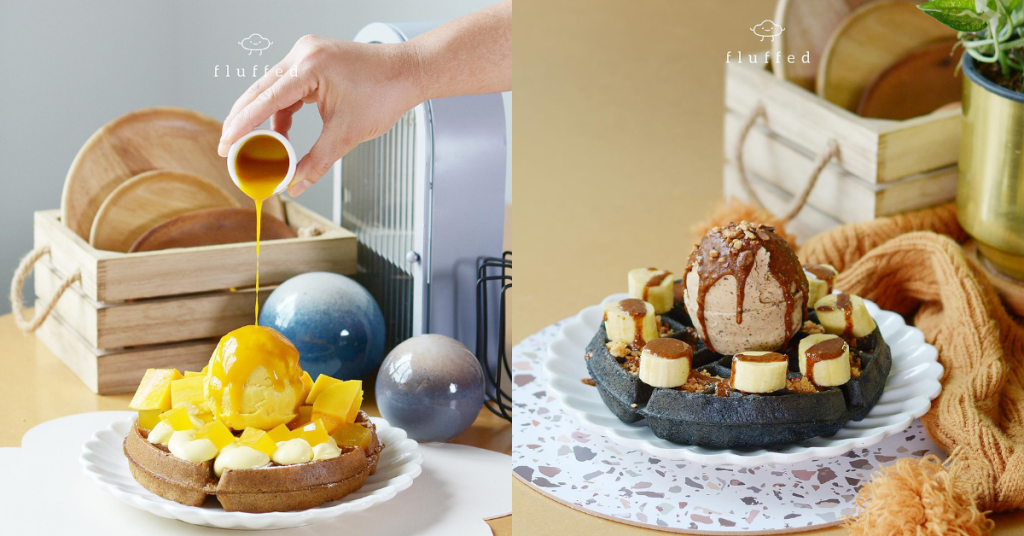
The growth was slow but steady. They said that they didn’t rely on any gimmicks, never paid for marketing, and never really achieved virality in the early days.
Plus, back then, Taman Paramount had been much quieter. There were only one or two eateries there, and the rest were all hardware shops and the like. It took them around one year before they gained proper traction.
From there, though, Fluffed continued to do well and even survived through the pandemic. Yet, it seems like it’s only now that Fluffed has taken a real interest in expanding, having opened their second store at Sunway Mentari just last year.
The reason for the long wait was the fact that they were understaffed. The two were also very involved with the daily operations, making it hard to focus on the big picture.
Things changed when they met their mentor. With the mentor’s guidance, Charles and Joe were able to let go, delegate, and eventually, expand.
Another key motivator for their expansion, the duo revealed, is their team.
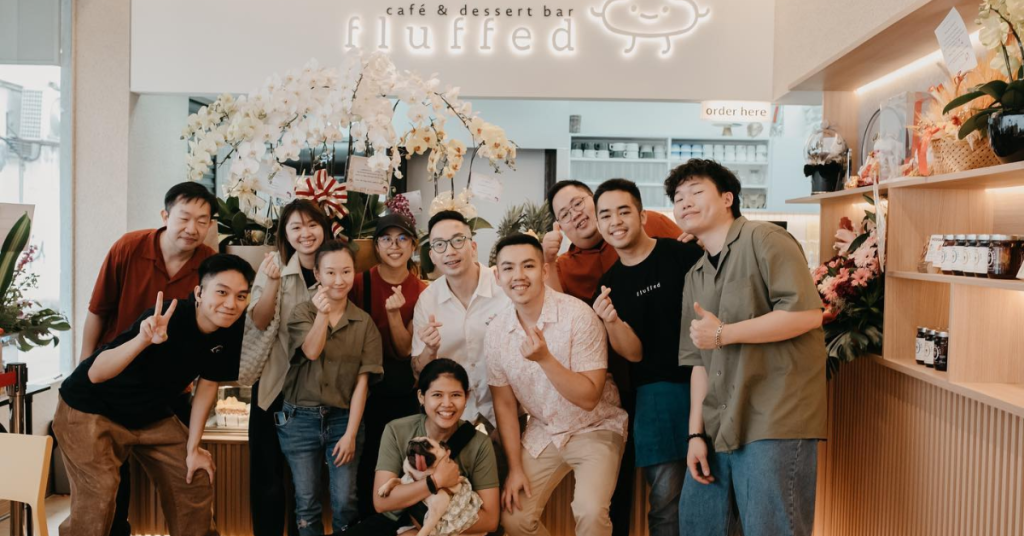
“We are quite blessed to have a lot of local staff who have worked with us for many years, so we think that we need to expand in order to offer them better positions, higher pay, and a future within our company,” Charles shared.
Rising as entrepreneurs
Coming from a background as bakers, entrepreneurship is something that can be challenging for the duo. Charles believes that it’s the love they have for F&B that really gives them the energy to challenge themselves as business leaders.
“If you really like it, you have the energy to handle all the other things you’re not interested in,” he said.
Reflecting on the past decade that they’ve been running Fluffed, Charles is proud to share that they’ve grown quite a lot—from “just boys who like baking” to full-fledged businessmen.
He recalled that in the beginning, their staff would sometimes look down on them, as they were the same age. But now, after 10 years in the industry, they’ve earned their respect.
Advising budding F&B entrepreneurs, Charles said that it’s important to know your direction. With so many cafes in the market these days, it’s key to find your USP so that customers can remember you.
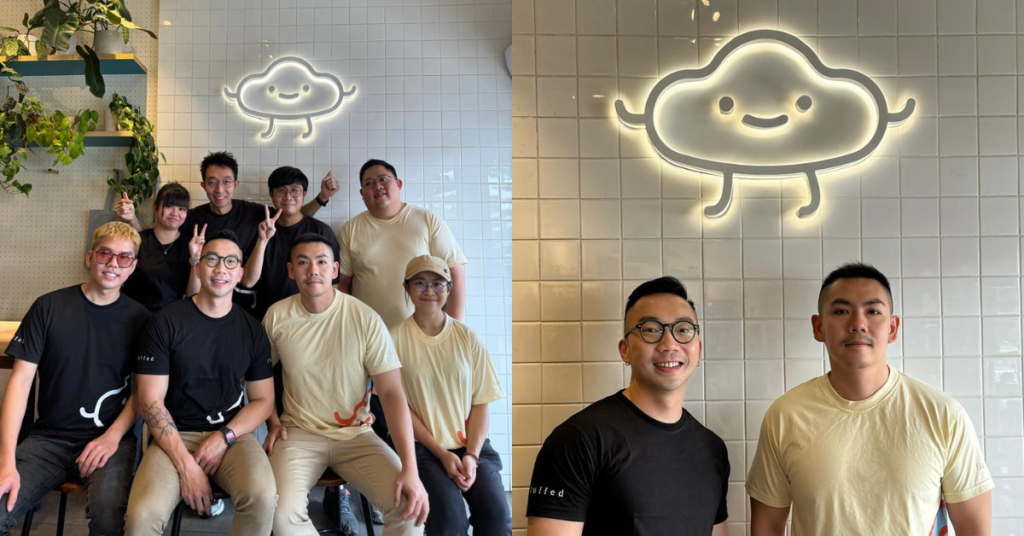
“You have to be the person who knows everything,” he added. “We know how to make coffee, ice cream, and cakes. You have to be part of everything. “Only if you can do that should you consider opening a cafe.”
Additionally, you can’t be driven by money. He believes that when profit is the motive, when problems arise, you will end up making desperate and wrong decisions.
For Joe, he believes that Fluffed’s secret strength lies in selling what they like to eat.
“If you’re doing business just because it’s a trend, you don’t even know whether your product is good or not,” he said. “But if you actually enjoy what you’re selling, that’s your strength.”
Not expanding in a flurry
If you keep up with food trends in KL, you may have come across a viral video recently of a “salmon don bingsu”. Don’t worry, it’s not real sashimi—it’s actually jelly.
This was the creation of Charles and Joe’s new bingsu cafe, Flurrē by Fluffed.
During their travels, the two have gotten the chance to try many different desserts, some of which have served as inspiration. Shaved ice aside, they’ve also cooked up many different ideas in the past.
“We are quite stable with Fluffed now, so we wanted to see if we were capable of doing other things,” Charles said. “We kind of want to surprise fans and show we can make something as good as Fluffed.”
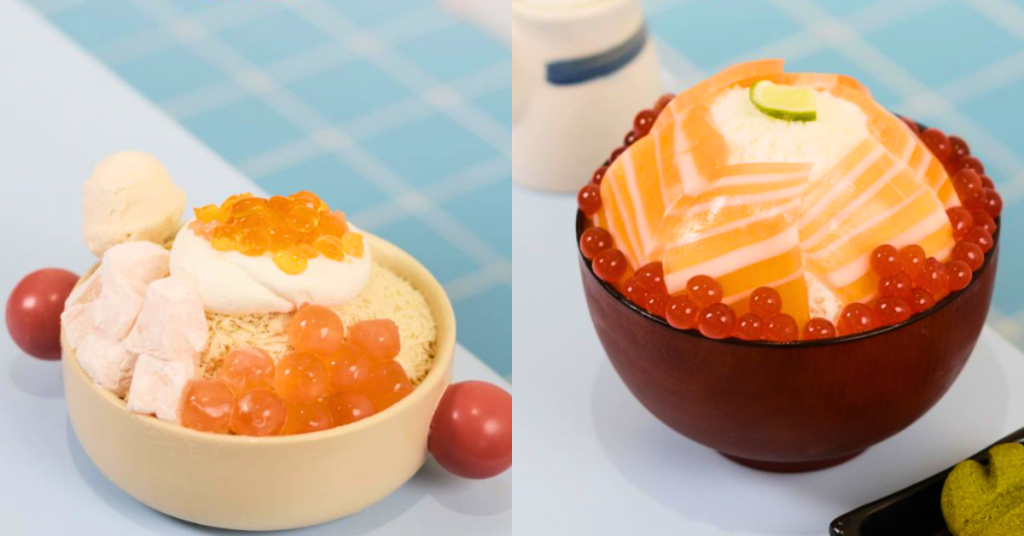
Studying the shaved ice market, they felt that there was an opportunity for them to offer something unique. Most of Flurrē’s toppings and the base are made in-house, from scratch.
The salmon don is obviously one unique offering that has caught the attention of many. However, the two revealed that the salmon don wasn’t something they recommended or highlighted on their menu.
“We thought that one was more of a fun flavour, a gimmicky flavour,” Charles admitted. “We didn’t expect people to like it that much. It’s out of my expectations, but I’m very happy.”
Whipping up the future
With the positive responses garnered by both brands, Charles and Joe are definitely interested in growing. In fact, it seems like their next branch is closer than we think.
Yet, they do not want to rush and abandon their quality or core values. They want to pay attention to the details, such as manpower arrangements and inventory.
Having run their Taman Paramount outlet for nine years, they’ve actually watched their regulars’ children grow up.
“We became part of their childhood memories,” Charles said.
That personal touch is something they hope to preserve, even as they grow bigger and better in the years to come.
Also Read: SDEC 2024 will explore the latest trends in semicon, AI & ecommerce, here’s how to join
Featured Image Credit: Fluffed Cafe
Once a kitchenhand in Australia, this M’sian chef now runs his own Thai restaurant in PJ
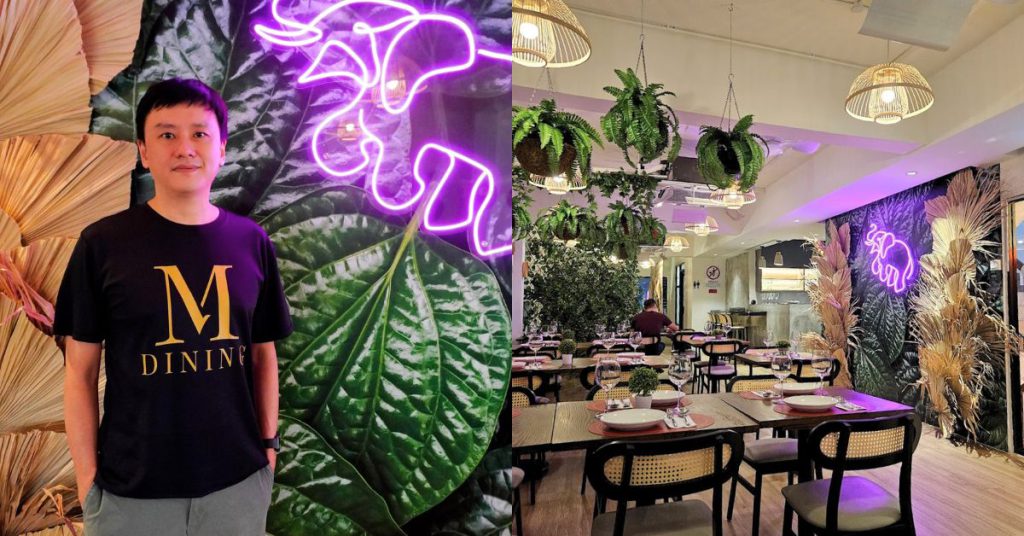
Located on the mezzanine floor in Damansara Uptown, M Dining offers an unexpected and innovative twist on traditional Thai cuisine.
Spearheaded by Malaysian chef Wilson Teh, who recently returned after a long culinary stint in Melbourne, the restaurant aims to redefine how Malaysians experience Thai food.
Wilson’s journey in the food and beverage industry spans over 20 years, with a significant portion spent in Australia, where he honed his skills in contemporary Thai cuisine. His restaurant, M Dining, is about reimagining Thai flavours in a modern context.
From kitchenhand to award-winning chef
Wilson Teh’s culinary story is nothing short of inspiring. Originally in Melbourne for tertiary studies, his love for cooking was ignited while working part-time in restaurants.
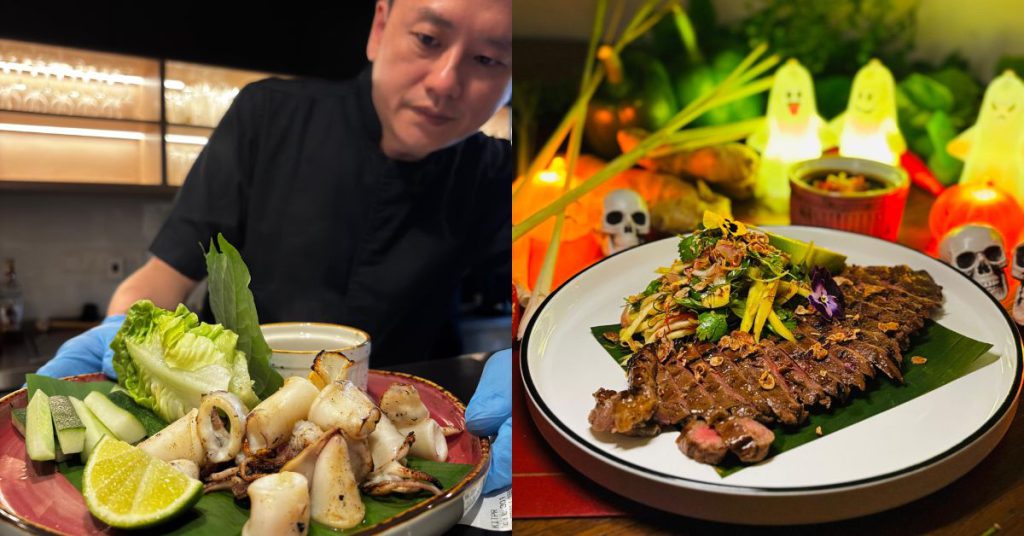
It wasn’t long before he found himself at Longrain, a renowned restaurant in Melbourne known for its innovative take on Thai cuisine. Starting as a kitchenhand, Wilson climbed the ranks over seven years, becoming one of the chefs in charge.
Longrain’s modern approach to Thai dishes was where he first experimented with balancing traditional Thai flavours with contemporary techniques.
His work also earned accolades from prestigious publications, including the Australian Good Food Guide and the Herald Sun Delicious 100 in 2018.
“Working at Longrain gave me a deep appreciation for the art of blending flavours,” Wilson to Vulcan Post. “We made all our sauces and pastes from scratch, which is a principle I’ve carried over to M Dining.”
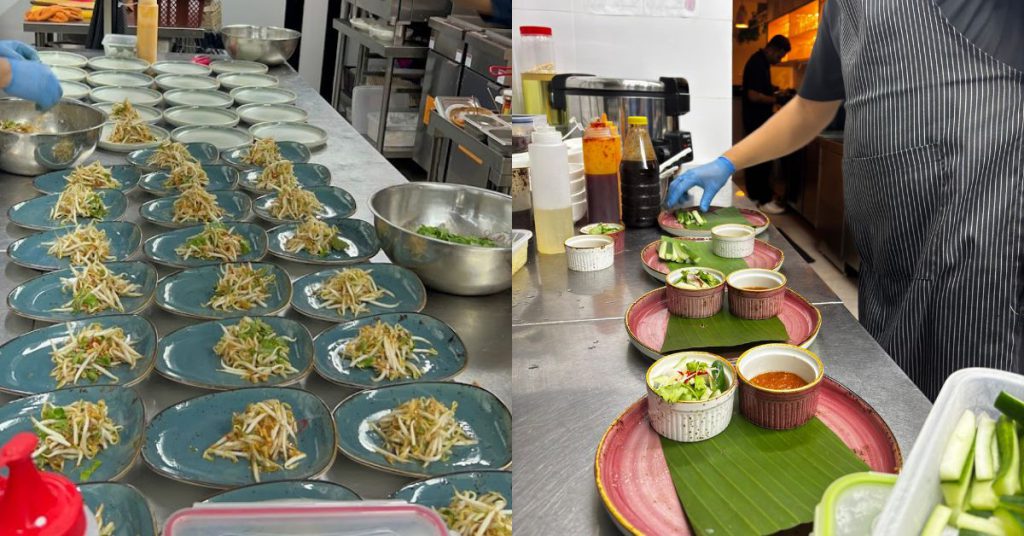
A personal and culinary journey
Returning to Malaysia in 2022, Wilson was driven by two primary goals: to be closer to family and to realise his dream of opening a restaurant.
With his wife expecting their second child, Mabel, the timing seemed perfect to make the transition back home.
“I wanted to bring what I learnt in Melbourne to the Malaysian food scene,” he shares. And thus, M Dining was born.
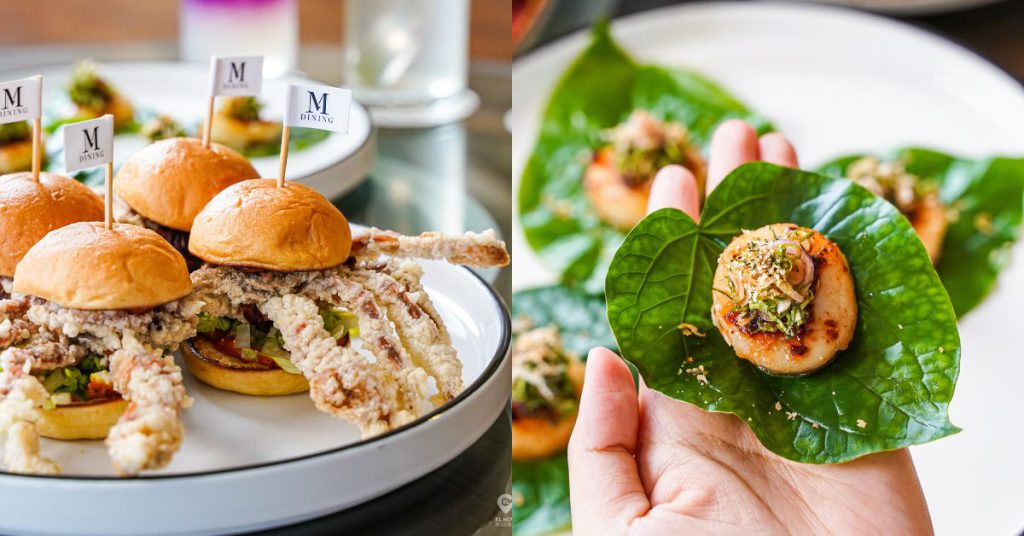
The name “M Dining” holds significant meaning for Wilson. While “M” stands for the mezzanine floor where the restaurant is located, it also reflects many personal elements.
“M” represents Muar, the town where he grew up, Melbourne, where he learnt his trade, his late father Kon Ming, and his two children, Marcus and Mabel. All of these ‘M’s came together to form the identity of M Dining.
“I didn’t want a traditional Thai restaurant name because I didn’t want customers coming in with preconceived notions of what Thai food should be. M Dining is all about surprising the palate,” Wilson explained.
What’s on the menu?
One of the first things that stands out at M Dining is its promise of “Thai food reimagined”.
Wilson is clear that while the essence of traditional Thai cuisine remains, the dishes are presented with modern flair and unexpected flavour pairings.
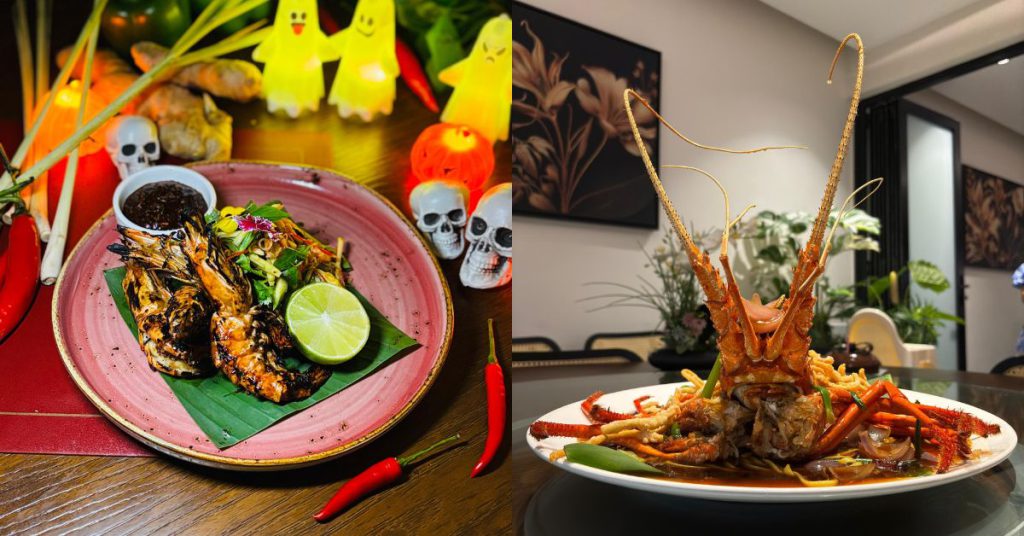
The restaurant’s dishes blend fresh local ingredients with premium imports, creating a fusion that still pays homage to Thai roots but with a twist.
“We don’t just serve the usual Thai dishes. For example, our signature Soft Shell Crab Slider comes with house-made tom yum mayo, offering a new way to enjoy classic flavours.”
“And our Symphony of Flavors: Thai-Korean Fusion Basil Chicken Bibimbap, is my take on Thai-Korean fusion,” he said with pride.
For first-time customers, Wilson recommends trying the Scallop Betel Leaf, a fresh take on a classic Thai snack, or the Panang Curry Lamb Shank, which features slow-cooked Australian lamb in a roasted peanut curry. These dishes reflect the modern-meets-traditional philosophy that defines M Dining.
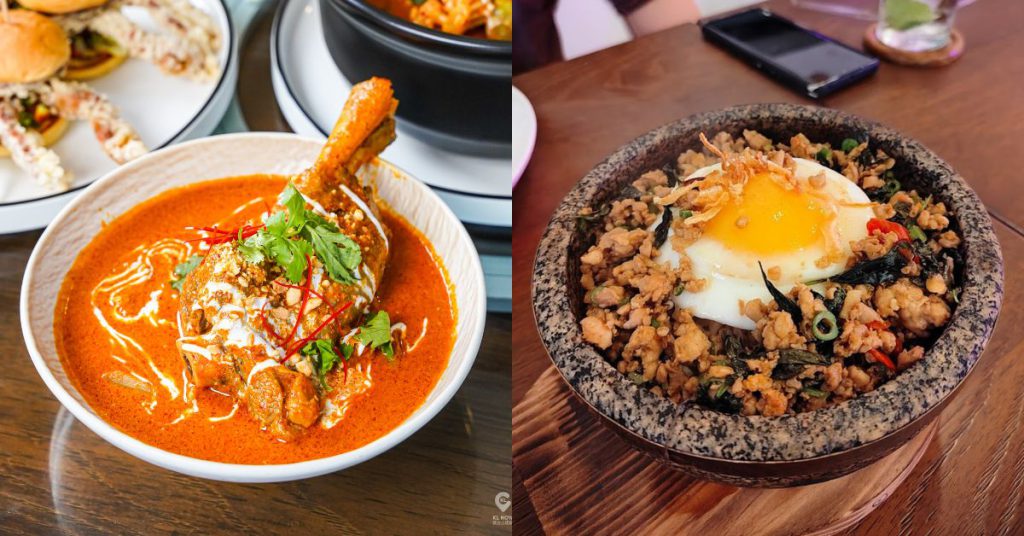
An interesting backstory that illustrates M Dining’s adaptability is how the popular Thai soup, Tom Yum, became a staple on the menu.
“We didn’t originally include Tom Yum in our menu. But nine out of 10 customers asked for it. Eventually, we gave in to customer demand, and now, it’s one of our bestsellers,” Wilson shared.
It was a valuable lesson in balancing innovation with customer preferences.
“Customer feedback is vital,” he emphasised. “We still make it a point to interact with guests and gather their thoughts. It helps us improve and adapt while staying true to our concept.”
Challenges in the Malaysian F&B scene
Opening a restaurant in Malaysia, particularly in the saturated Thai cuisine market, has its challenges.
One of the most frequent questions Wilson gets is whether his chef is from Thailand, a sign of how ingrained traditional Thai food expectations are in the local market.
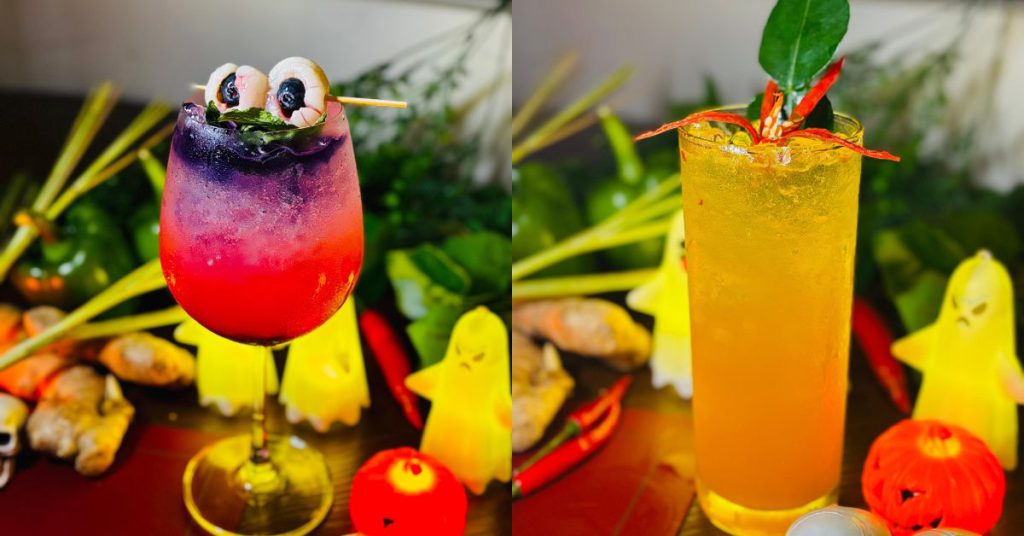
“We also faced challenges with our location. Being on the mezzanine floor, we had to work hard to get people in the door,” Wilson admitted.
Marketing was key, and M Dining took to social media to build a presence. The restaurant’s beautiful dish presentations lend themselves well to platforms like Instagram, where diners are increasingly driven by visuals.
“In Malaysia, people eat with their eyes first. We were advised to include food photos on our menu, which was a great tip,” Wilson said with a chuckle.
Bigger dreams for M Dining
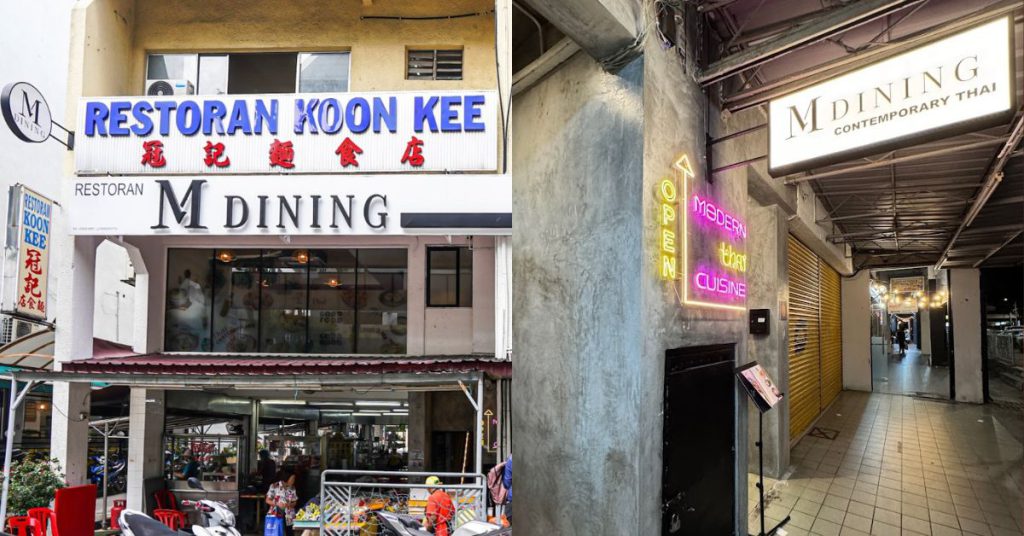
Although M Dining is still relatively new, having opened just over a year ago, it’s already gaining recognition.
The restaurant recently received the Thai Select award from Thailand’s Department of International Trade Promotion, a significant accolade for a non-traditional Thai eatery.
“We’re thrilled about the recognition,” Wilson said, “But our bigger ambition is to one day earn a Michelin star.”
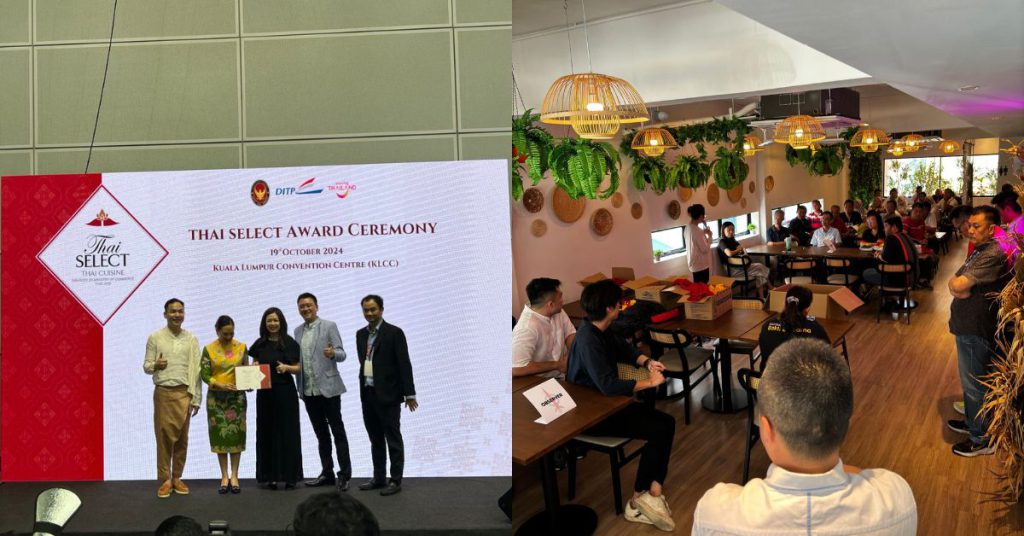
Wilson also hints at expanding the concept of modern Thai cuisine to reach more diners, whether through new locations or different dining formats.
“It’s not just about food; it’s about the overall experience. From our customisable set menus for special occasions to our theatrical six-course meals, we aim to offer more than just a meal. We want every guest to leave with a memorable dining experience,” he said.
For Wilson Teh, M Dining is more than just a restaurant—it’s the culmination of years of learning, hard work, and passion. His journey from kitchenhand to head chef is a testament to the power of persistence and innovation.
While the Malaysian F&B scene may be competitive, M Dining is carving out its niche with its unique take on Thai cuisine.
So, if you’re in the mood for something different, something that reimagines Thai flavours while offering a modern dining experience, M Dining can be on your list.
- You can learn more about M Dining here.
- Read other articles we’ve written about Malaysian startups here.
Also Read: How this Malaysian SME overcame financial hurdles to grow their business with this 1 solution
Featured Image Credit: M Dining
Many S’porean financial planning platforms failed. Here’s how this one plans to survive.

Let’s face it: we need to have a better relationship with money.
Many of us often feel the pinch whenever we see our monthly bank statements, and some even find ourselves living paycheck to paycheck.
Yet, some of us continue to spend lavishly. According to an article by Psychology Today, doom spending is defined as when a person splurges to indulge and comfort themselves from stressors such as the tense political climate and growing economic disparities.
This phenomenon is apparent in Singapore, especially amongst those aged 40 and “Henrys”—young high flyers that have yet to become rich.
Financial consultants explained to The Straits Times in May that people spend impulsively to “distract themselves” from the seemingly “dystopian” state of the world and its economy. However, many often forget that they grow deeper in debt and might experience difficulty recovering financially as they age.
With societal concerns such as the lack of job security and inflation, it’s no wonder that almost half of Singapore residents believe that they will never achieve financial freedom.
To decrease the financial literacy gap, many people, including Joey Lim and Chungsoon Haw, founders of sav.finance, have launched their own platforms to combat that issue.
However, with many financial planning businesses dying out in the last few years, how do they intend to sustain?
Sav.finance first started as a podcast
While many might recognise sav.finance as an Instagram account that aimed to engage and help “new adults” in Singapore in navigating money, career and wellbeing, the company actually started out as a podcast—Money Shots.
Joey shared that she started the business on Instagram at the beginning of 2020 and invested approximately S$1,000 with her former business partner. However, the platform was stagnant, and she was desperately trying other ways to grow, which led her to start the podcast.
“We thought there were a lot of interesting money questions that surrounded us in our daily lives that we would sort of gossip with our friends about,” explained Joey. Each episode would focus on a set topic, such as paying on first dates and on Wedding Ang Pao rates, where they would debate and share their opinions.
I’ve personally listened to a few of Money Shots’s episodes prior to speaking to Joey, and let’s just say that it was unfiltered and raw in the most interesting way, which she acknowledged was not “everyone’s cup of tea”.
“I was very unhinged in the podcast,” Joey added frankly. She explained that while she has received criticism from listeners for being “too vulgar,” some enjoyed the contrasting dynamics between the hosts and found the podcast gave a refreshing and casual take on finance.
This allowed sav.finance to grow its audience and expand its community. “I think that gave our audience a peek into sav’s personality as a brand and because of how intimate the podcast was, people started feeling like they could also share their problems and questions,” said Joey.
For Chungsoon, personal finance has been an area of interest since he graduated from university. He notably worked for The Financial Coconut, another homegrown personal finance company, before joining sav.finance.
But wait a minute, didn’t Joey already have a co-founder? How did Chungsoon come into the picture?
New founder, new beginnings
Joey’s journey with sav.finance was marked with many twists and turns, as the platform was founded when many financial lifestyle brands emerged, making it more difficult for them to stand out.
“We went through all the emotions, got angry about copycats, and stressed about constantly coming up with new ideas, but ultimately decided to put our heads down and continue doing what we did best,” reminisced Joey.
Despite her determination, her then-co-founder expressed his desire to leave the company. As Joey solely handled the design aspect of the business, she naturally decided to put sav.finance on hold and posted their “final” Instagram post in 2022.
“There were quite a few encouraging messages that made me feel sad about leaving our little community behind. And this was when Chungsoon (CS) slid into my DMs,” Joey added.
I reached out to Joey when sav.finance was initially going to shut down to better understand the situation. Realising that there is an opportunity, I took over from the previous founder and continued running it with Joey till today.
Chungsoon Haw, co-founder of sav.finance
Since Chungsoon joined the team, the company has focused on building more tech and expanding its presence beyond Instagram—this includes working offline with financial brands or engaging with followers by hosting workshops.
“We’re trying to meet the audience where they’re at—understanding the importance of finances but not having a place that they can connect with or tools that make it easier for them. Our content and workshops are meant for the former, and digital tools like money planners, and goal-setting calculators are meant for the latter,” said Chungsoon.
Sustainability is the goal
Currently, sav.finance’s Instagram page has grown to have 30,700 followers at the time of writing, with 85 per cent being women and 90 per cent being under 34 years old.
Last year, the company also held workshops, created digital tools such as a budget planner, and launched WhatIns, a digital platform that focuses on connecting people to financial advisors.
Chungsoon shared that they received many messages looking for insurance advice and decided to launch Insurance Diary, an Instagram carousel series that is a spinoff from another series: Money Diary.

“However, Instagram isn’t very good for finding information, so we decided to turn it into a website,” he explained. The online website has since evolved into a platform that provides people with diverse insurance suggestions and helps them find an advisor that matches their needs.
The team decided to monitor the platform for four months to gauge if the site met the needs of their audience, to which they successfully garnered interest from the general public.
Chungsoon quickly clarified that WhatIns solely connects people with insurance advisors as a neutral platform. Rather than persuading users to purchase insurance plans and policies, their goal is to make exploring and understanding insurance options as “easy and seamless as possible”.
However, sav.finance and WhatIns have been unable to break even consistently. Chungsoon explained that the company’s primary source of income is sponsorships and “a bit” from their users’ purchase of digital products and workshop sign-ups.
But that isn’t something we can rely on on a regular basis.
Ultimately, the biggest question for us is how do we plan on staying relevant to our audience while creating the content that the platforms are willing to promote. Right now we’re looking to start creating reels. Besides that, it’s about creating more digital products and other workshop type events that we have full control over.
Chungsoon Haw, co-founder of sav.finance
To increase their efficiency, the team hopes the long-term value will come from kickstarting new products and services using their audience instead of “starting from scratch”.
Nonetheless, their audience has been receptive to their informative posts and events. Last year, over 1,000 people signed up for their Money Spring Cleaning workshops, which touched on three key topics: budgeting, insurance, and investing.
While WhatIns has also facilitated almost 1,000 insurance suggestions since its inception last year, the company has plans to improve both platforms. They have also expressed their desire to expand the range of workshops and the frequency in the future if their audience wants them to.
- Learn more about sav.finance here.
- Read other articles we’ve written about Singaporean startups here.
Also Read: S’pore bosses conflicted over employee work-life boundaries & productivity, new survey shows
Featured Image Credit: sav.finance